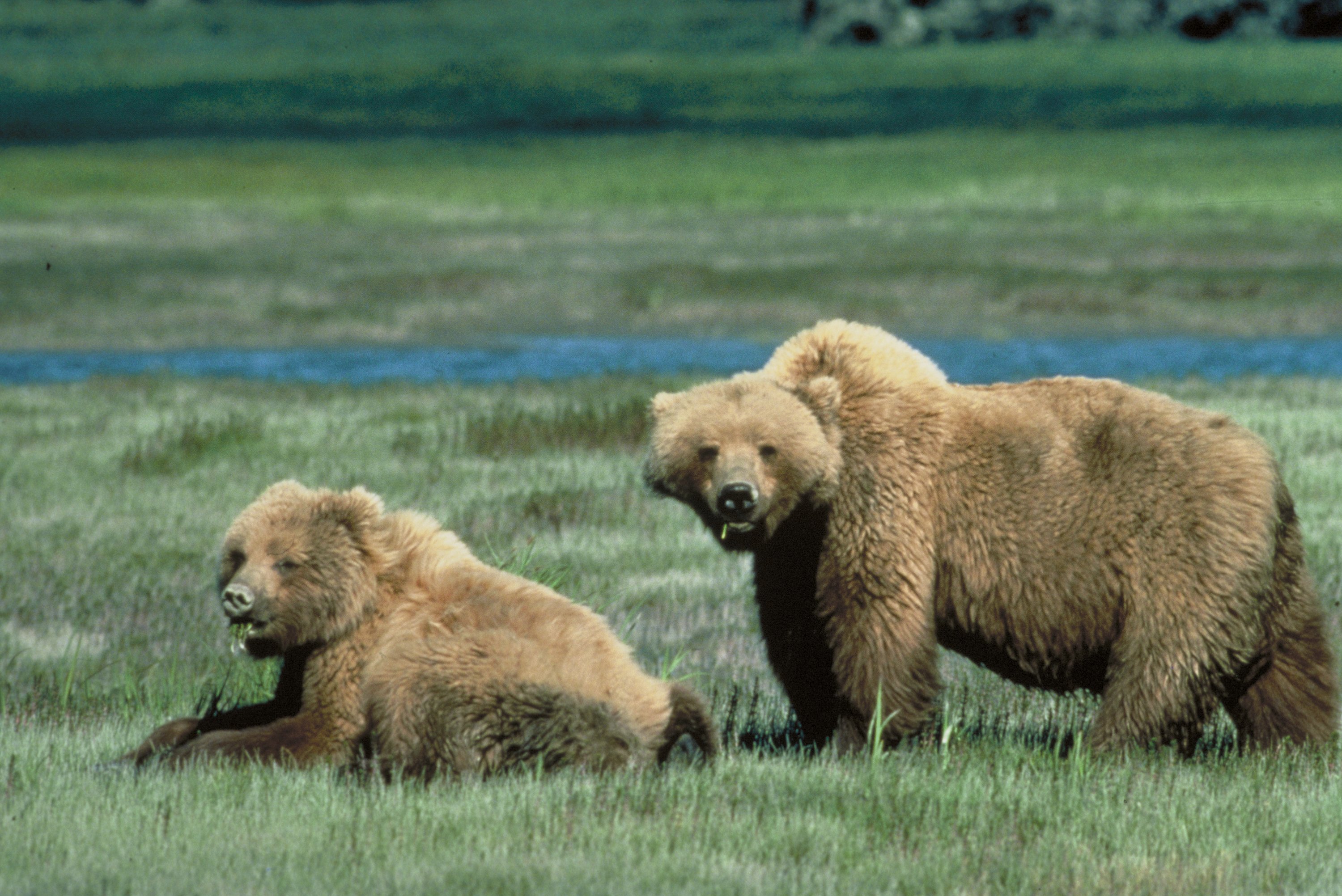- Caniformia
Taxobox
name = Caniforms
fossil_range =Paleocene - Recent

image_width = 200px
image_caption =Grizzly bears
regnum =Animal ia
phylum = Chordata
classis =Mammal ia
ordo =Carnivora
subordo = Caniformia
subordo_authority = Kretzoi, 1943
subdivision_ranks = Families
subdivision =
*Ailuridae (red pandas)
*Amphicyonidae (bear-dogs, extinct)
*Canidae (dogs and foxes)
*Mephitidae (skunks and stink badgers)
*Mustelidae (weasels, otters, badgers)
*Odobenidae (walrus)
*Otariidae (eared seals)
*Phocidae (earless seals)
*Procyonidae (raccoons, coatis, olingos)
*Ursidae (bears)Caniformia, or Canoidea (literally "dog-like") are a
suborder within the orderCarnivora . They typically possess a long snout and non-retractile claws (in contrast to the cat-like carnivores, theFeliformia ). ThePinnipedia (seals, sea lions, and walruses) evolved from caniform ancestors and are accordingly assigned to this group. All members of this group (with the exception ofCanidae ) have non-retractile claws and tend to beplantigrade . Another trait that separates them from theFeliformia is that they have more teeth. They have a longerrostrum with less specializedcarnassials . They tend more towards omnivorous and opportunity-based feeding, while the feliforms are more specialized in eating meat. Caniforms have single-chambered or partially divided auditory bullae, composed of a single bone, while in feliforms the auditory bullae are double-chambered, composed of two bones joined by aseptum .Extant families
Caniformia consists of twelve families, with nine extant and three extinct. At one time,
Hyaenidae were included, but are now grouped with feliforms. Caniforms are found all over the world (even when not countingdog s), even mainlandAntarctica , as seals have no natural land predators so they can rest on land.The Family
Canidae (canids, commonly known as either dogs or canines) includeswolves ,dog s,fox es and so on. They are the most social of all the caniforms, living in packs. The dog is the most diverse of all mammals in terms of body structure.The Family
Ursidae (the bears) are the largest of all the land caniforms. They range from the largepolar bear (males, 775–1500+ lb) to the smallsun bear (males, 66–132 lb) and from the endangeredgiant panda to the very commonblack bear . While generally omnivorous, ursids range from consumate carnivores to near total herbivores.The Family
Ailuridae (thered panda ) was once thought to be either part of the Procyonidae or the Ursidae. It now belongs to its own family. It is found inChina , but may have also lived inNorth America .The Family
Mephitidae (the skunks), once thought to be part of theMustelidae , is now a group in its own right. This group is famous for its foul smell.The Family
Mustelidae (the weasels and otters) is the most diverse of the group. The members are famous for their fierce hunting instinct and (usually) streamlined body.The Family
Procyonidae (the raccoons)The Family
Phocidae (the true seals)The Family
Otariidae (the eared seals and sea lions)The Family
Odobenidae (thewalrus )Evolutionary history
The caniforms first appeared as tree-climbing,
cat -like carnivores in thePaleocene (65–55 million years ago). "Miacis " was probably an early caniform.Classification
clade | style=font-size:85%;line-height:85%
label1 =Caniformia
1 = clade
1 =Amphicyonidae †
2 =Canidae
label3 =Arctoidea
3 = clade
label1 =Ursoidea
1 = clade
1 =Hemicyonidae †
2 =Ursidae
2 = clade
label1 =Pinnipedia
1 = clade
1 =Enaliarctidae †
2 = clade
label1 =
1 =Phocidae
2 = clade
label1 =
1 =Otariidae
2 =Odobenidae
label2 =Musteloidea
2 = clade
label1 =
1 =Ailuridae
2 = clade
label1 =
1 =Mephitidae
2 = clade
label1 =
1 =Procyonidae
2 =Mustelidae External links
* [http://taxonomicon.taxonomy.nl/TaxonTree.aspx?id=103313 Taxonomicon]
Wikimedia Foundation. 2010.
